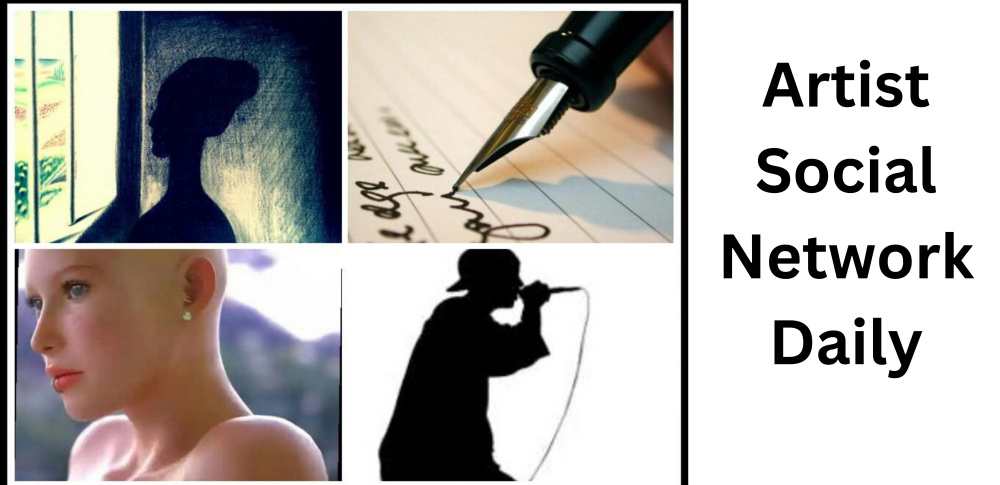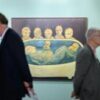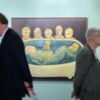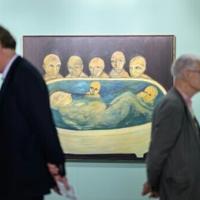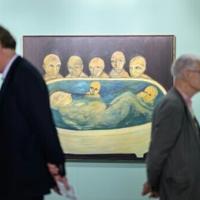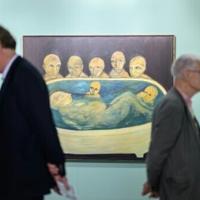London-based art dealer Adam Baldwin, founder of Baldwin Contemporary, has a rather unconventional backstory. The gallery was established against the backdrop of international quarantines and a turbulent art market, for one thing. And what began as an online-only endeavor has since evolved into an influential brick-and-mortar enterprise. Now based in a private gallery space housed in a historic townhouse in South Kensington, the business has also grown a reputation for its rigorous exhibition program.
Baldwin has garnered international recognition as a significant player in the secondary market for Modern, postwar, and contemporary fine art, specializing in original work by some of the biggest names of the 20th century: including Andy Warhol, Jean-Michel Basquiat, David Hockney, and Gerhard Richter, to name a few. While initially focusing exclusively on dealing to private individuals, today Baldwin works with foundations, museums, and artists’ estates, both nationally and internationally.
In light of the gallery’s intriguing rise within the art world ecosystem, we sat down with Baldwin to learn more about the gallery’s roots, and what plans he has for his next big move.
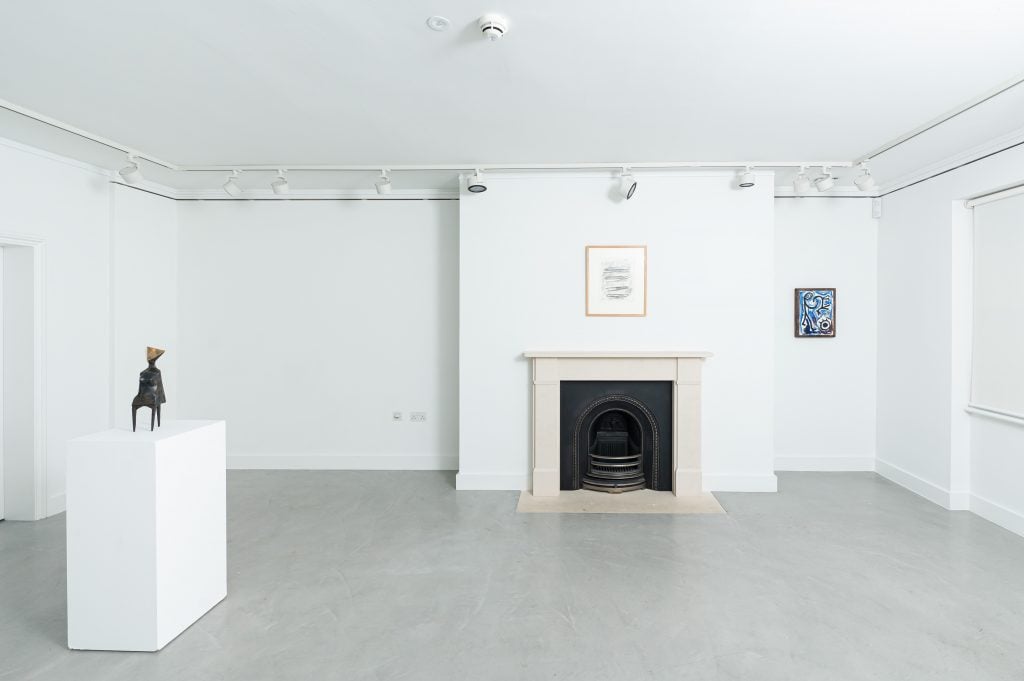
Installation view of “Lynn Chadwick: It All Started in Venice” (2024). Courtesy of Baldwin Contemporary.
You launched Baldwin Contemporary during the lockdowns—how did that timing affect your business or influence how you approached running the gallery?
That moment tragically brought a lot of pain to a lot of people, but one of the things the lockdowns did was create a boom in online and at-a-distance art sales. So, while it wasn’t the most conventional time to be starting out, it was ultimately during this time that my business became what it is today.
Following the lockdowns being lifted in the U.K., we moved into a permanent physical space and the whole thing just went from there. Looking back, we did it all the wrong way around, but that also meant that we never needed to take on any investors, loans, or debt. The business has been entirely self-financed from day one.
I imagine it’s also embedded a certain level of entrepreneurialism and commercial creativity into the core D.N.A. of the business that we may not have had if we’d started in a more traditional way.
Baldwin Contemporary has developed a robust exhibition program. What informs how you create these shows?
Everything we show is underpinned by scholarship, and we purposefully work with some of the world’s leading specialists, curators, and writers in order to get things just how we want it.
Our exhibitions are accompanied by standalone publications featuring essays, interviews, and newly commissioned texts.
By focusing exclusively on the secondary market, we have the freedom to choose our program exactly how and when we want it—we decide what we think is relevant and right for our collectors and base our strategy around that. Being purposefully collector-centric allows us a nimbleness, integrity, and curatorial freedom that I just don’t think is possible with the primary market gallery model.
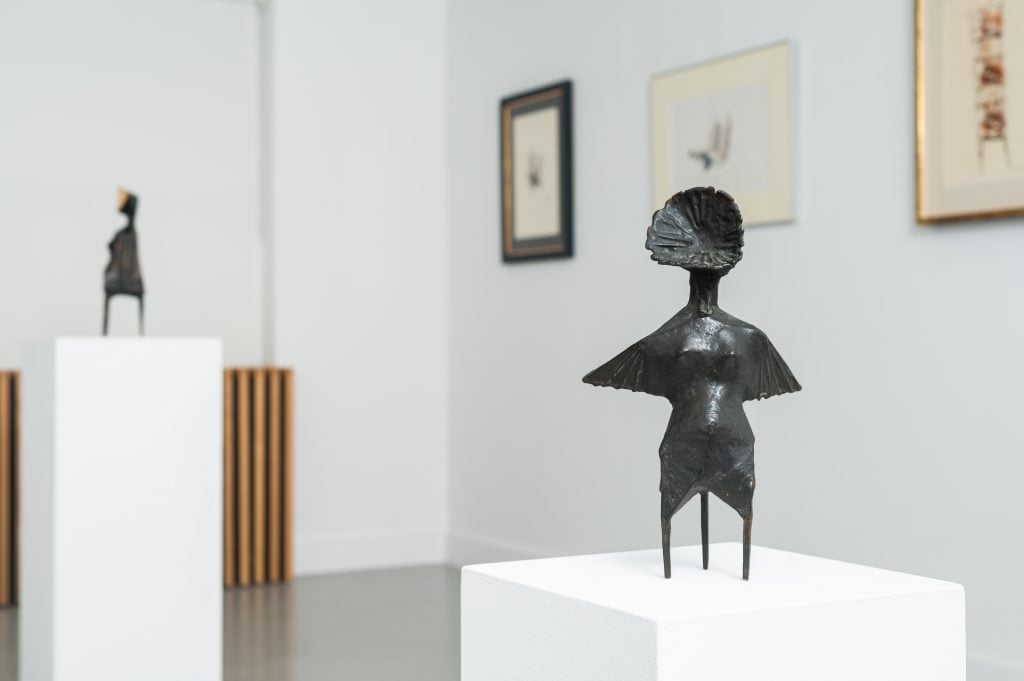
How would you describe the gallery’s core mission or ethos?
To be a leading authority in the presentation and handling of the finest works of art created in and around the 20th century.
What advice would you give to a first-time collector?
Take your time. It’s a lot easier to buy art than it is to sell it. Until your tastes are honed, and you really understand what it is that you like (and don’t like) then you’re going to make mistakes. Find galleries and dealers who have an eye you trust and programs you feel an affinity with and then work alongside them as you build your collection. Enjoy the experience and go with the flow. Take risks but always trust your instinct. Only ever buy works that you connect with.
Can you tell us about your own art collection?
I recently bought a painting by Jean Dubuffet for my home in London. I love his work, and I’d buy a lot more of it if I could.
Damien Hirst was the first artist I paid what I would consider “proper money” for. I do think his 1990s “Spot” paintings have huge significance. I’ve also got works in my collection by Andy Warhol, Max Ernst, Gerhard Richter, Günther Förg, and Nicolas Party. A few months ago, I bought a lovely Roy Lichtenstein drawing, which is very small but so classically Pop—I just had to have it.
I’m currently on the lookout for a suitable Jean-Michel Basquiat drawing or oil stick on paper—I’ve got a super A.R. Penck painting that I think one would look great hung next to. I’d also love to acquire some of Ed Ruscha’s 1960s photographs of Los Angeles, but the right ones are proving hard to find….
I also have a particular fondness for 1960s British Pop art, and Gerald Laing in particular, whose large-scale paintings are significantly undervalued right now considering his contributions to the Pop art movement.
What’s next for Baldwin?
We’ve been fortunate with how things have gone over the past few years, and I don’t want to lose sight of what our core business is and what we’re about. We’ve now got a presence in the U.S. (Miami), which felt like an obvious next step for the business. But I’m still undecided as to the best way we should be doing that, so we’re spending the next six months or so figuring out exactly what that should look like in the long term. For exhibitions, I think the Palm Beach market is probably more suited to our inventory, but let’s see.
But right now, life’s good.
Learn more about Baldwin Contemporary here.
This post was originally published on this site be sure to check out more of their content
